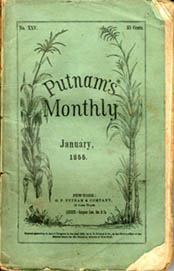 Number 25, January 1855 (Vol. 5, No. 1) | |
| Frequency | Monthly |
|---|---|
| Founder | George Palmer Putnam |
| First issue | 1853 |
| Final issue | 1910 |
| Company | G. P. Putnam's Sons |
| Country | United States |
| Based in | New York, New York |
| Language | English |
Putnam's Monthly Magazine of American Literature, Science and Art was a monthly periodical published by G. P. Putnam's Sons featuring American literature and articles on science, art, and politics.